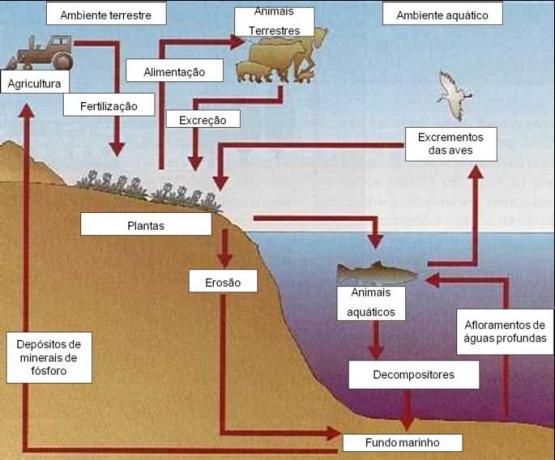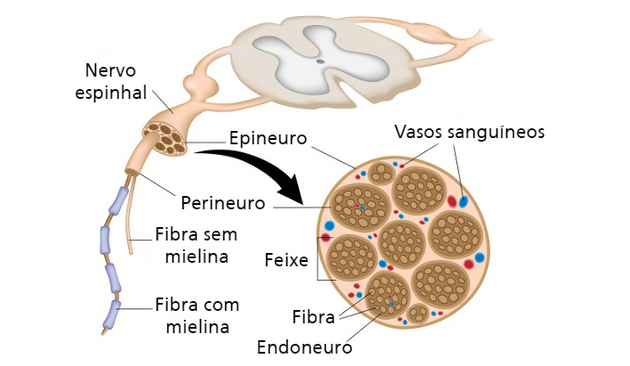Microorganisms or microorganisms they are beings whose structure is only identified with the use of a microscope. These organisms are studied in Microbiology and the main types are: fungi, bacteria, protozoa and unicellular algae. In addition to them, there may be microscopic animals such as mites.
Viruses are also microscopic beings, but many authors do not consider them to be living beings because they do not have all the basic characteristics of life.
While many microorganisms have beneficial applications such as food and drug manufacturing, some can be pathogenic and disease-causing.
What are microorganisms?
Microorganisms are the smallest forms of life. With the invention of the microscope by Anton von Leeuwenhoek, at the end of the 16th century, it was possible to identify beings that are not seen with the naked eye. This discovery was important mainly to unravel the origin of living beings.
Before, by the theory of abiogenesis, beings were believed to arise spontaneously. With the microscope it was possible to see, for example, that the deterioration of food and diseases were caused by preexisting microorganisms that reproduced.
Microorganisms can be found anywhere, in water, soil, skin and the digestive tract of animals. Healthy intestinal flora, for example, is made up of billions of microorganisms.
In places that have been sterilized there are no such beings, as this process destroys microbial life forms. Sterilization can be chemical, with the use of solutions such as alcohols and peroxides, or physical, with the application of heat and radiation.
Also read about Microbiology.
Types of microorganisms
Living beings can be divided into two large groups according to their cellular organization: prokaryotes and eukaryotes. Prokaryotes, most microorganisms are in this group, have a simpler organization and eukaryotes are more complex beings with a well-defined cell nucleus.
Virus
What are: are acellular beings, whose size varies between 20 and 300 nm.
Features: are diverse and capable of mutating. They are intracellular parasites, because to reproduce they need to invade a cell and use all its resources. These organisms are the cause of many diseases. Because they are so small, they can even infect fungi and bacteria.
where are found: can be found anywhere. Although they are capable of infecting any type of cell, outside of them they remain inert.
Examples: SARS-CoV-2 is a virus belonging to the coronavirus family and causes COVID-19 disease. AIDS is caused by the human immunodeficiency virus (HIV).
Learn more about virus.
Bacteria
What are: simple, unicellular, prokaryotic and heterotrophic organisms that belong to the Monera Kingdom. Their dimensions can range from 0.3 by 0.8 µm to 10 by 25 µm.
Features: are abundant life forms on the planet, whose size does not exceed one micrometer. They can live in isolation or form colonies.
where are found: in the soil, in fresh and salt water, in the air, superficially and within decaying organisms and materials.
Examples: bacteria of the genus lactobacillus are important for the balance of the gastrointestinal tract and bacteria Streptococcus pneumoniae are the cause of pneumonia disease.
Learn more about bacteria.
Fungi
What are: are beings that are part of the Fungi Kingdom, eukaryotes, heterotrophs and can be uni or multicellular.
Features: can be macroscopic, such as mushrooms and lichens, or microscopic that are unicellular, such as mold, mold and yeast.
Examples: the fungus penicillium was used for the development of the first antibiotic, penicillin. Fungi of the genus Candida are cause of candidiasis disease.
where are found: in soil, water, plants, animals, man and waste in general.
Learn more about fungi.
Protozoa
What are: they are eukaryotic, unicellular and heterotrophic beings, which are part of the Protist Kingdom.
Features: have a wide variety of shapes and can occupy humid environments.
where are found: Much is free-living aquatic, but some are parasites and live inside the bodies of other living beings.
Examples: amoebas are sarcodyne-type protozoa, the Entamoeba coli, for example, inhabits the large intestine. The flagellate protozoan that parasitizes wild animals, Trypanosoma cruzi, causes Chagas disease.
Learn more about protozoa.
single-celled algae
What are: photosynthetic, protist, eukaryotic and unicellular autotrophic organisms.
Features: are chlorophylled beings that release large amounts of oxygen into the environment. In the food chain they are classified as producers in aquatic environments.
Examples: phytoplankton is formed by algae and cyanobacteria. Picoplankton has the smallest size, as it varies from 0.2 to 2 µm.
where are found: Most known algae are aquatic, but they can be found anywhere on Earth where they have moist environments.
Learn more about seaweed.


